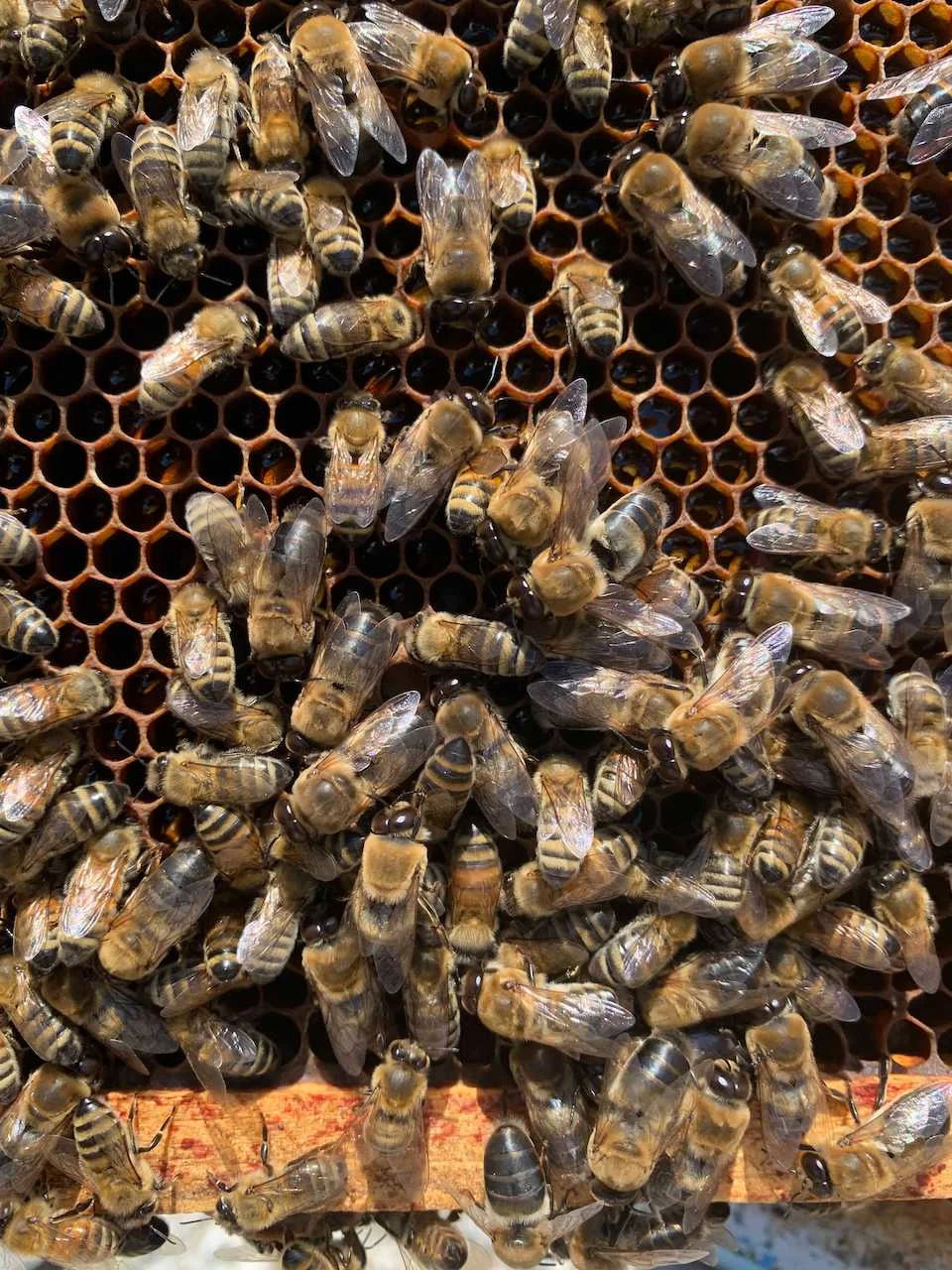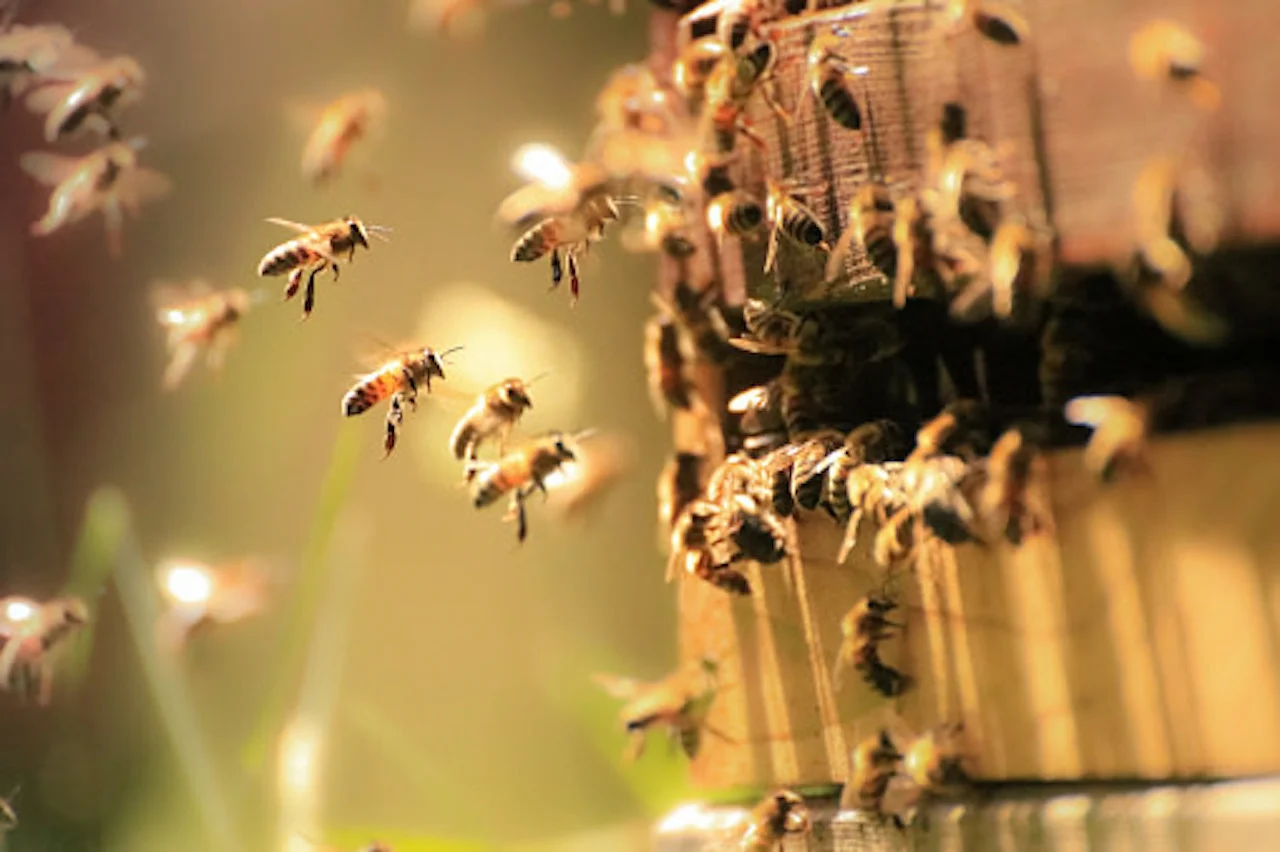
Male honeybees can't handle heat, cold stress like females can
Exposure to stresses such as heat, cold and pesticides can have a greater negative impact on drones (males) compared to worker (female) honeybees, studies have shown.
New research has come to light showing male honeybees are more vulnerable to the effects of extreme temperatures and other stresses than their female counterparts.
The findings are part of research undertaken by University of British Columbia (UBC) researchers, led by postdoctoral fellow Alison McAfee, as well as her apiarist colleague, Emily Huxter, respectively.
Visit our Complete Guide to Spring 2022 for an in-depth look at the Spring Forecast, tips to plan for it and much more!
A new study touched on the drones' (males) sensitivity to cold and pesticides, more so than worker (female) bees. The research found that 76 per cent of drones, male bees whose only roles are to mate with queens, died after two hours at a temperature of 4°C compared with zero worker bees.
The other experiment, which hasn't been peer-reviewed, used a polystyrene cover to prevent the effects of extreme heat on the drones and beehives. It's been previously determined that after six hours at 42°C, 50 per cent of male honeybees will die of heat stress. These are the same temperatures observed during 2021’s heat wave in B.C.

Drones. (Abigail Chapman)
"There's really very little research done on drones. In general, they're the neglected group of bees in the colony. Most people who work with bees have a sense that drones are quite sensitive to stress, whether that is temperature stress or exposure to chemical compounds," said McAfee, in a recent interview with The Weather Network.
"I think it's a real shame there's not more known about drones because drones are half of the equation when it comes to honeybee reproduction. Anything that impacts their health and fertility, or survival, is a really important thing to study."
STUDY AIMS TO ADDRESS HOW DRONES AND WORKER BEES DIFFER IN TOLERANCE THRESHOLDS
The analysis into how drones and workers differ in their responses to stressors began in the spring of 2020 and was published recently.
While it's difficult to find an answer as to why drones and worker bees have different thresholds for stress tolerances, the inquiry is looking into how they're contrasting and defining where their limits lie, McAfee said. What is clear is that there is an "obvious" difference in terms of what drones and workers can withstand.

Alison McAfee holds a hive frame. (Dominique Weiss)
"One hypothesis we had after getting that data was that maybe drones don't produce as many, say, detoxification enzymes or other proteins that might help them deal with something like pesticide stress. Our hypothesis was that they would have lower levels of these proteins," said McAfee.
However, the researchers were shocked to learn the opposite rang true after sampling the blood of the drones and workers: Drones actually have more stress-coping proteins than their female counterparts.
"This is our best guess on how this arose. They sort of have the strategy of producing high levels of stress-response proteins, kind of across the board," said McAfee. "But because they've invested all the resources into that already, they really have nothing in reserve to kind of create a stronger response to an acute stress."
As a result, it's as if they've "hedged their bets" against being damaged by numerous stressors, McAfee said. However, if a stressor becomes too large, they likely won't be able to rely on their response to deal with it.
"Some things like temperature or heat stress, for example, damages their fertility in a matter of hours. If they were relying on a response where they had to translate and produce new proteins to deal with that, then it might take too long," said McAfee, who has reviewed bee health for some time.
ONE WAY TO KEEP THE DRONES AND BEEHIVES COOL
As part of the hive installation method test, researchers found that a straightforward polystyrene cover may help cool beehives during heat waves, thus averting a harsh outcome for the male bees. The examination occurred in the summer of 2021 -- amidst one of B.C.'s multiple heat waves.

Alison McAfee inspects a beehive. (Dominique Weiss)
Huxter began noticing dozens of dead drones in her apiary. She took photos and emailed them to McAfee. "So that kind of raised alarm bells for me because a lot of my previous research was on the effects of heat stress and fertility. I was studying both drones and queens," she said.
The two worked together to test two-inch polystyrene covers on six hives, while just feeding bees syrup in six others. They discovered the blanketed hives were almost 4°C cooler than the controls while those just given syrup were about 1°C cooler.
SEE ALSO: Honeybees can pose a threat to wild bees, here's how
"Temperatures as low as 40°C for a short period of time was enough to kill their sperm cells," said McAfee. "They're not like humans. They produce all the sperm that they'll ever have during development and they can't replenish them and they start to die. So, heat killing their sperm is like a permanent reduction in their fertility."
While using the covers is an option to mitigate the heat stress, McAfee cautioned there is still "so much to do" on them and this was a "really quick and dirty experiment" to find a solution with the time researchers had. It hasn't been peer-reviewed at this stage, but the testing could help beekeepers find easy ways to keep their hives cool during extreme heat.

(Getty Images)
"I think using these polystyrene covers would improve the chances of survival for these kinds of small colonies that are more vulnerable. But what's really left to be tested is by how much does it improve their chances of survival? Especially under these more extreme versions," said McAfee.
'ALARM BELLS' RAISED FOR NATIVE SPECIES
She said if we're seeing these mortality problems with honeybees then that should "kind of raise alarm bells" about issues the wild insects are facing, too.
"They're not nearly as capable of thermal regulating as honeybee colonies. So, if we're seeing these problems with honeybees, then it's very likely worse for the solitary native species that don't have those groups and those effective behavioural methods of heat reduction," said McAfee.
The economic and agricultural value of honeybees and wild bees in Canada is quite significant. According to the federal government, it's estimated that honeybee pollination directly contributes anywhere from $4 billion to $5.5 billion to Canada's economy every year.
Wild bees also contribute a great deal financially. In Ontario alone, commercially raised bumblebees generate approximately $502 million for the province each year.
Thumbnail courtesy of Abigail Chapman.
Follow Nathan Howes on Twitter.






